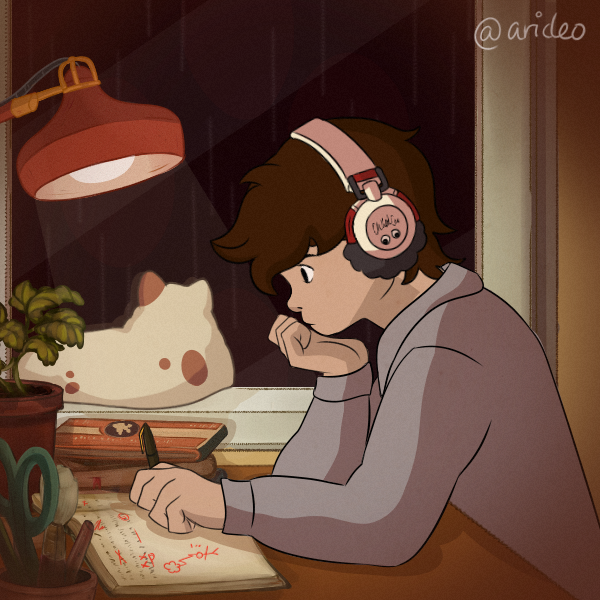Atchually
I feel like the people that perpetuate this meme have never used Arch. I’ve ran it on multiple computers for just over a decade and only once have I had an issue. And that one time, it was my fault. It’s been the most solid OS I’ve used.
Meanwhile, my headless Ubuntu server couldn’t do a dist-upgrade without shitting all over itself. I only ran Ubuntu because of the constant “never use Arch for servers” talk. I wish I had never listened to that. Everything I own runs Arch now and it’s so nice.
Be fair, let’s not compare to Ubuntu, we all know it’s shit. The reason you don’t use arch on servers is because of bugs in new package versions and manual intervention requirements every once in a while, not because it breaks a lot. Try Debian on servers. It’s rock solid, even more so than arch.
Debian is currently on neovim version 0.4.4 (august 7, 2020). Arch is on 0.9.1(may 29, 2023) (current). That’s just an example off the top of my head.
If you use a server exclusively for serving content and never modify configs on your server… php current version is 7.4 (past EOL since Nov 2022)…
Oh wait, I’m only on Debian 11, though its supported until at least 2024. I have “support” but its for old versions of software. I sometimes can’t even share a tmux config between my desktop and my server, because the versions are so different.
I have had similar issues with debian dist-upgrades just like I have with ubuntu. Turns out jumping from neovim 0.4.4 to 0.9.1 (jk, debian sid STILL only has 0.7.2) is the kind of version jump that goes straight past a deprecation warning in 0.5 and actual deprecation in 0.6, and now my config doesn’t work. So the options are “always be perpetually just a bit out of date because we cant actually update to new software”, or “risk breaking things by having large version leaps, from the woefully outdated to the pretty new”
So the solution to needing newer server software versions: run things in docker… Which they package version 20.10 in the “docker.io” package. Uninstalling that, and reinstalling from the docker official source to get docker-ce gets us up to 24.0.5, which is the same version as arch. So it’s possible to get there, just not out of the box. And by the time you start adding ppa’s to your distro, things stop being as stable.
tl;dr - If you need up to date software, debian is awful. It is rock solid, but often obsolete.
I use it for my server with the docker workarounds, but needing to do workarounds make it less fun. If I had to start over, I might pick something else like NixOS. I dunno. For “not going to crash” levels of stability, I can’t explicitly name anything better, but for “actually functions how i want it to” it’s definitely not at the top.
For servers I’m actually a fan of FreeBSD. There’s a pretty good learning curve coming from Linux, but it’s about as stable as it gets, the documentation is probably the best, and I personally love the jails system.
Granted, everything I do is at the hobbyist level, but after messing with a number of OSs, I landed there after working with Green as and haven’t looked back.
Amen, freebsd is amazing for servers, with a little automation jails make docker and lxc look primitive, just wish there was a way to convert docker-compose to a jail instance.
Tbf the main people who steer away from something like Arch for servers are enterprise Linux users who prefer stuff like RHEL for the 10 years of never having to upgrade anything until the very last moment when they fork out thousands for expert sysadmins to upgrade it for the next 10 years.
Agreed. I’ve used it since 2006. There were times where it broke every few months years ago, but lately, it is rock solid. Updates aren’t scary.
I heard that Debian is pretty good for servers
Better than Ubuntu. Still, I feel like rolling release is great for a server
I like the rolling release for just about everything. Since package updates are spread out, you can usually figure out which package broke what pretty easily if something ever breaks down…, which shouldn’t, because I still can’t recall instance of such catastrophic failure just by updating.
The Ubuntu failure was likely also your fault. 😄
Lol, that’s fair. If I would have spent significant hours researching all the changes and the new config files, I probably could have had a better time.
However, around that time I decided that dist-upgrades were: 1) for the birds, and 2) like Windows in that it’s easier & better to wipe and reinstall.
It’s how I was in my first few years of Linux too. I think I started reading to understand what’s happening around Ubuntu 10.04. These days nothing scares me. I had a power failure during a 20.04 -> 22.04 upgrade. Shrugged, finished the upgrade procedure manually once the power came on. That particular machine hasn’t been nuked and paved since 14.04 or 16.04. Once you’re confident in what the system does, e.g. what apt and dpkg do, you can use them to do a lot. E.g. you can use dpkg to verify that all installed files for all packages exist and are indeed uncorrupted. Or compare a modified config file to the package one. And so on. I literally did a system file integrity check with dpkg on my corpo workstation the other day, after its SSD decided to disconnect from the system while it was running.
Maybe so, but it’s much harder to learn from your mistakes and fix them on distros like Ubuntu.
I say this as someone who has recently switched to Arch because my Windows existence was aggravating me and I had never clicked well with Linux in the past. It felt too unfamiliar and I think I’m the kind of masochistic weirdo who benefits from their first proper go at Linux being Arch.
I still don’t have a fully working setup on my desktop yet because I’m working on doing it properly, but problems and mistakes are much easier to fix on Arch than on any other distro I’ve used.
Standard Linux incel user blaming.
It’s true. Ever since I got married, intercourse has been at a premium.
Don’t do dist-upgrades of servers. Get a second server, set that up with the new OS and software, transfer traffic to the new server, shut down the old one.
That’s basically what I did. The only change was I installed Arch instead. No more dist-upgrades!
Just switch to NixOS, you can replace problems like this with a completely different set of problems.
How to fix an issue in linux? Simple! Just distro-hop.
Or just use a stable one like Debian!
This is what I did, from NixOS to Debian. I managed to end up with a dependency conflict in less than a day, precisely the problem that NixOS attempts to solve. I came back to NixOS and accepted my fate: asking for help from the NixOS community.
“Fun” story: Upgrading Debian once hosed my system so hard I needed to install a separate OS on another drive so I could copy over my data. An IT pro probably could have figured it out, but for whatever reason the upgrade decided that it really needed to take my hard drive and move it from /dev/sd1 to, I shit you not, /etc/home. No, I do not know why. No, I could not just move it back to /dev/sd1 because it tried to copy the entirety of itself into itself rather than just change a file location. I got to the Debian forum for help and just get the standard abusive incel fuckery in response.
I think that’s when I moved to SUSE for the first time. Way less shitty community.
> 2023
> python3: no such file or directory
Same problem on windows lol
Pyenv to the rescue (although there are simpler ways to link
pythontopython3, you should just use pyenv
Speak for yourself!
TempleOS is peak stability.
As God intended.
I mean, I have never had to distrohop to solve a problem. Granted, I have had to boot off a flash drive to fix issues on more than one occasion.
As the other guy said, #NixOS is great. It requires some learning however.
As a NixOS user I can confirm. It’s quite nice in some ways, infuriating in others.
While this generally gets a little chuckle from me, it really needs to die. It’s as old and untrue now as ‘ubuntu is just for noobs’, etc. I have never broken Arch with an update. I have broken it with changes I’ve made actively, but never just an upgrade. If you want to say the install process is unintuitive, or that the lack of defaults for practically anything you actually use is debilitating for new users, or overreliance on AUR is unsafe, or any number of other valid points, fine. But it doesn’t just break everything constantly.
I get surprised every time I see this meme as I’ve been running arch for about 6 years and I have never experienced anything system-breaking after an update. I once had no graphics because Nvidia had stopped supporting the GTX650, and updating the driver made it stop working. But I have seriously never had any problems updating.
…Mind you, I do use CSM and GPT-BIOS (GRUB) because I am stubborn like that.
Same, I’ve been using arch for about a year, and only issue I had was self inflicted: I removed a drive that was added to fstab.
Manjaro on the other hand was crippled couple of times by updates in similar time span.Yeah same. I constantly had this issue with Manjaro because it wouldn’t update my video card drivers properly, so every time I took a system update, I’d have to login via terminal and remove the old drivers before I’d get a desktop back.
Arch has been flawless since swapping to it in August 2021.
You’re one of the lucky ones, pretty good!
Only thing that breaks me now and then (still very rarely) is wlroots-git and sway-git. Once or twice there has been a bug that needed me to downgrade, wait for a fix, or fix myself.
And even then the packages you mentioned aren’t maintained in the main repositories (I think).
Yeah, those are AUR packages, and not even supposed to be stable. The fact that I’ve only run into major issues a couple times is impressive.
Grub moment
Thats how you know op never used arch btw.
Your Linux is safe and sound, just needs a little help getting off the drive and into ram :P
But let’s hope you saved your dpkg list! I completely uninstalled everything a few weeks ago (like really everything, including network-manager) on a server because I had typos in my sources.list and didnt bother looking at what I’m doing on the apt upgrade. Gladly I backed up the list of installed packages before that. Mounted the debian boot-disc to the VM, reinstalled network-manager and sshd and then I could fix the rest of the system
Don’t forget that you can also set up the network manually (usually) as long as you have a tool to set your IP address or dhclient for get a DHCP address (and wpa_supplicant if you need wireless)
What’s with this weird resurge of “arch bad” memes in lemmy lately?
I wouldn’t mind if most were based in reality, and not stereotypes that haven’t been true since the 2010’s lol
All the cool kids use NixOS now 😎
Awesome, that means I can be retro 👌
I used arch for years, that nevers happened to me
@razieltakato @pyromaniac_donkey yeah, if you read the news posts you won’t have issues.
Breaking changes are also fewer and farther between these days.
Hook line and sinker lmao
For me only because I was dumb. But it’s preetty easy to fix tho. Can imagine worse shit happening.
go find your boot drive, boot into the installation environment, check if your drive is still there with lsblk, chroot into your system and run a pacman -Syu. It should probably fix it
…probably
While this echoes some other comments, this meme should go soon. I’ve used Arch for years at this point, and if there’s ever something wrong, it’s generally my fault, and the official announcement and mailing list do a pretty good job telling you what you should do before upgrading your system. Install a tool informant to check for unread news for you for when you try to update, and stop your upgrade transaction if there are news you haven’t read. These announcements are pretty rare. My system’s also been rock solid. I read that they have an official installer now to help ease installation. Things are pretty great with Arch.
On the other hand, Ubuntu has been a pain in the ass. Putting aside the horrible experience with dist-upgrade, Gnome has been the most painful DE I’ve ever used.
- Odd resizes of my windows on sleep & wake on a multi-monitor setup.
- Randomly spawn the password prompt on sleep & wake, with no way to remove the prompt unless I do a
pkill gnome-shelland let the DM restart gnome-shell. - Software Centre can just randomly fail to fetch package updates. Update installs through software centre can also fail with the most unhelpful messages.
- Software centre will stop a full update if there’s an app in the list that’s running. Arguably a feature, but not all apps require that. That decision should be left to the discretion of the app maintainer. Users can individually update other apps to circumvent the problem, but that’s a paper cut to me.
The particular GRUB issue (on UEFI systems) it’s referring to hit EndeavourOS as well. It’s actually what nudged me into just going with systemdboot. Also, to be fair, with Arch, it’s a good habit to check the update notes on the website prior to updating.
Endeavour’s default bootloader has been systemd-boot for a few months now. systemd-boot has been flawless for me, I’ve never needed to configure it, it detects all kernals automatically, don’t know why anyone would anything else.
I’ve been with EndeavourOS for longer than that…I WAS THERE MAN!..I WAS THERE! . (also GRUB Customizer sucks…IYKYK) . I would eventually get GRUB working again but, it was not the same. I went to systemdboot.
.
;)System-d boot doesn’t support booting from BTRFS snapshots as far as im aware.
Damn. That’s a pretty big feature. I was just considering moving to BTRFS too.
I’m reading it, but in 8 years of several machines with arch and it’s derivates never had. One time an update destroyed the icons of bspwm - that’s about all.
This has happened to me, but I last used arch in c. 2012. And in all fairness, I was using it during the transition to systemd, gnome 3, etc.
Clearly it is difficult to shake a reputation.
This is a Situation any tinker on Linux will find theirselves in. I reinstall my Linux regularly because I changed settings and shit that broke it. Problem is I change so much that I don’t know what broke it.
What helped me minimize my reinstalls was enabling ssh on my PC. If my UI goes pear shaped I can go through the logs on my phone or my laptop. I can also recommend COW-filesystems liks btrfs or zfs for snapshots and rollbacks.
That’s good advice, thank you. I spent a while learning how to set up and enable SSH in a secure way, but I wasn’t quite sure on many practical use cases for my situation yet.
Always a pleasure to help :) Yeah took me a while to get it right to, but fortunately there are many guides to secure it properly.
ssh is so amazing. With X11 forwarding you can start graphical apps aswell, so via ssh you can run everything you would on your host but via lan or the internet. I used it to edit documents directly in libreoffice on my host and I have an app on my smartphone wich emulates a mouse.
Ssh is always enabled Also usually I can access the tty but sometimes a reinstall is easier than figuring out how to fix it.
Snapshots is sth I still should setup.
Ssh is always enabled
That depends on the distribution. In archlinux the server is disabled by default. If I remember correctly some distributions distinguished between the client and the service package, which arch doesn’t, so it could be standart to enable it if you install the server.
Also usually I can access the tty but sometimes a reinstall is easier than figuring out how to fix it.
Yes, true and most of the times it’s quicker to reinstall. It’s especially annoying if you haven’t used your system in a while and have no idea what you did last.
Snapshots is sth I still should setup.
The gentoo wiki has a super detailed guide about porting your system to btrfs: https://wiki.gentoo.org/wiki/Btrfs/System_Root_Guide
I heard there are immutable distros where you can only change user space. That might be a solution to that problem?
No because they can still break user space. These users need ChromeOS.
Just rollback and you good. I use Micro OS as my work driver for 3 years now, never had such problem. Chrome OS ? wtf?
It was just a joke :)
Havent gotten this problem for a long time now, i use nixos btw
same, using debian and leveraging flatpak to get latest app updates.
















